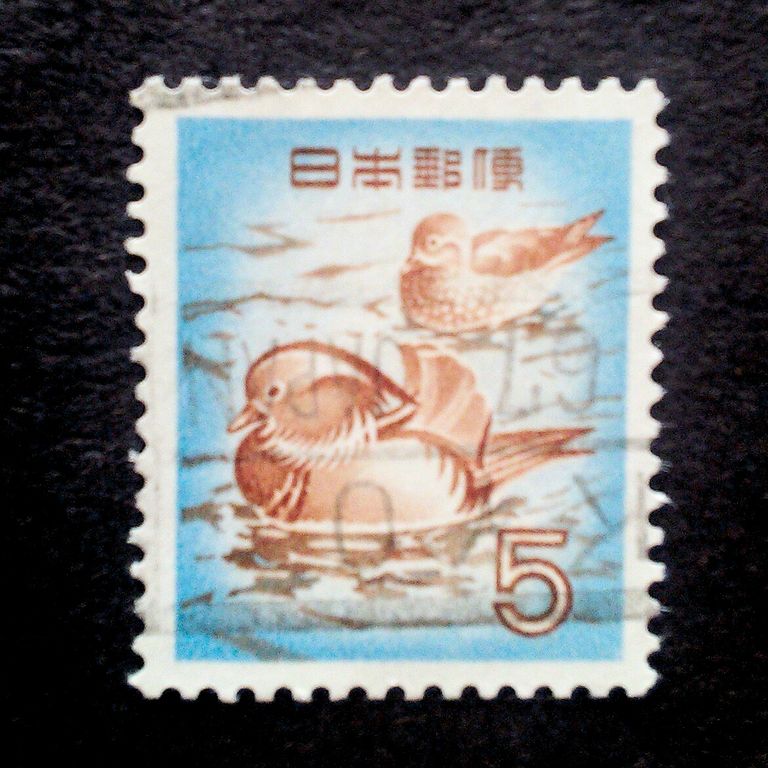I see that the collector community is sleeping a little and I decided to wake it up by starting to publish posts about some artifacts of my collections, in this case we will talk about postage stamps.
All photographs are original, taken by me and each postage stamp is in my collection.
Postage stamps, in addition to being a means of payment for sending correspondence and a collectible, are a pointer from a teacher who shows us where to turn our attention and what knowledge we can expand our horizons.
It is difficult to enumerate all the topics that were involved in the printing of postage stamps. Art, sports, technology, chess, flora and fauna, architecture and luxury goods, this is a small part of the interesting and informative topics for the development of our intellect.
If you are able and willing to listen carefully, postage stamps can tell a lot of interesting things.
I decided to choose for today's publication a small, very small postage stamp that was issued in 1955 in Japan.
This is a 5 Japanese Yen postage stamp.
This postage stamp depicts a beautiful bird, one of the most beautiful birds on our planet - the Mandarin Duck.
The natural color of this duck is perfect!
If you've seen this duck in the wild, or at the zoo, you'll never forget it.
This duck, similar to Japan, to the Japan that we know today is very bright and contrasting.
But, look at this postage stamp.
On it, this duck is depicted in faded brown tones.
Knowing how pedantic the Japanese are with regard to quality, it is difficult to imagine that this is a desire to save money on paint.
There is some symbolism that this duck is not bright and colorful enough.
1955, ten years have passed since Japan's surrender in World War II, the bombing of Hiroshima and Nagasaki, a difficult time.
Namely, in 1955, the rapid growth of the country's economy began, which. up to 1973, it gave an increase of 10 percent per year!
Apparently, there were things that could be saved on. The size of the postage stamps, the economy on paint, it was.
It was rumored that Japan bought axes and hammers from the USSR for smelting, it was cheaper than mining ore and smelting steel.
But, these savings were justified, the country quietly, but inexorably, moved forward, becoming the champion in the introduction of advanced technologies.
It was Japan that became the engine, it is believed, thanks to which, today, I type text in the Hive blockchain.
But, despite the apparent cheapness of the production of this postage stamp, it is made of very high quality, like everything that is produced in Japan.
It is pleasant to hold such a postage stamp in hands, the paper weight is high.
I have one such postage stamp in my collection, but in very good condition.
Apparently, it is extinguished, but the imprint of the stamp only slipped on the surface of the postage stamp without spoiling its image.
This postage stamp was not used for mailing correspondence, but was canceled by order.
It has become a kind of burnt token that is only suitable for a private collection.
I would not be surprised if, one day, we find out that the creator, or a group of persons, creators of Bitcoin, were philatelists, and knew well how to increase the value of the coin, by the principle of increasing the value of a postage stamp.
After all, if there are more canceled postage stamps in one run, the more expensive are clean, not canceled postage stamps.
At auctions, I see the same postage stamps and their price, today, has a lot of variation, but I'm glad my postage stamp looks better than any of those offers.
Let's take a look at this postage stamp.
Description of the postage stamp:
Type: Postage Stamp.
Country: Japan.
Subject: Fauna,Animals,Birds,Drawings,Ducks.
Series: Fauna, Flora and National Treasures 1952-1968.
Name: Mandarin Ducks Aix Galericulata.
Denomination of a postage stamp: 5 Japanese Yen.
Michel's Japan catalog code: 643A.
Episode release date: September 10, 1955.
Perforation: comb 13 x 13.
Postage stamp size: 22 x 26 mm.
Printing technology: Photogravure.
Circulation: ?.
Estimated price for a clean postage stamp: $ ? - $ ?.
Estimated price for a canceled postage stamp: $ 0.01 - $ 0.84.
Photo: original from @barski collection.
Canceled postage stamp:

In this photo, you can see the back of a postage stamp and the perfect adhesive that proves that the postage stamp has never been glued to the envelope.

I want to show you what this postage stamp looks like against the background of an envelope.
Ironically, I only had a postal envelope issued in the USSR in the seventies.
A postage stamp, thriving today, Japan, lies on the envelope of a country that was among the victors in the war, but no longer exists on the world map.
